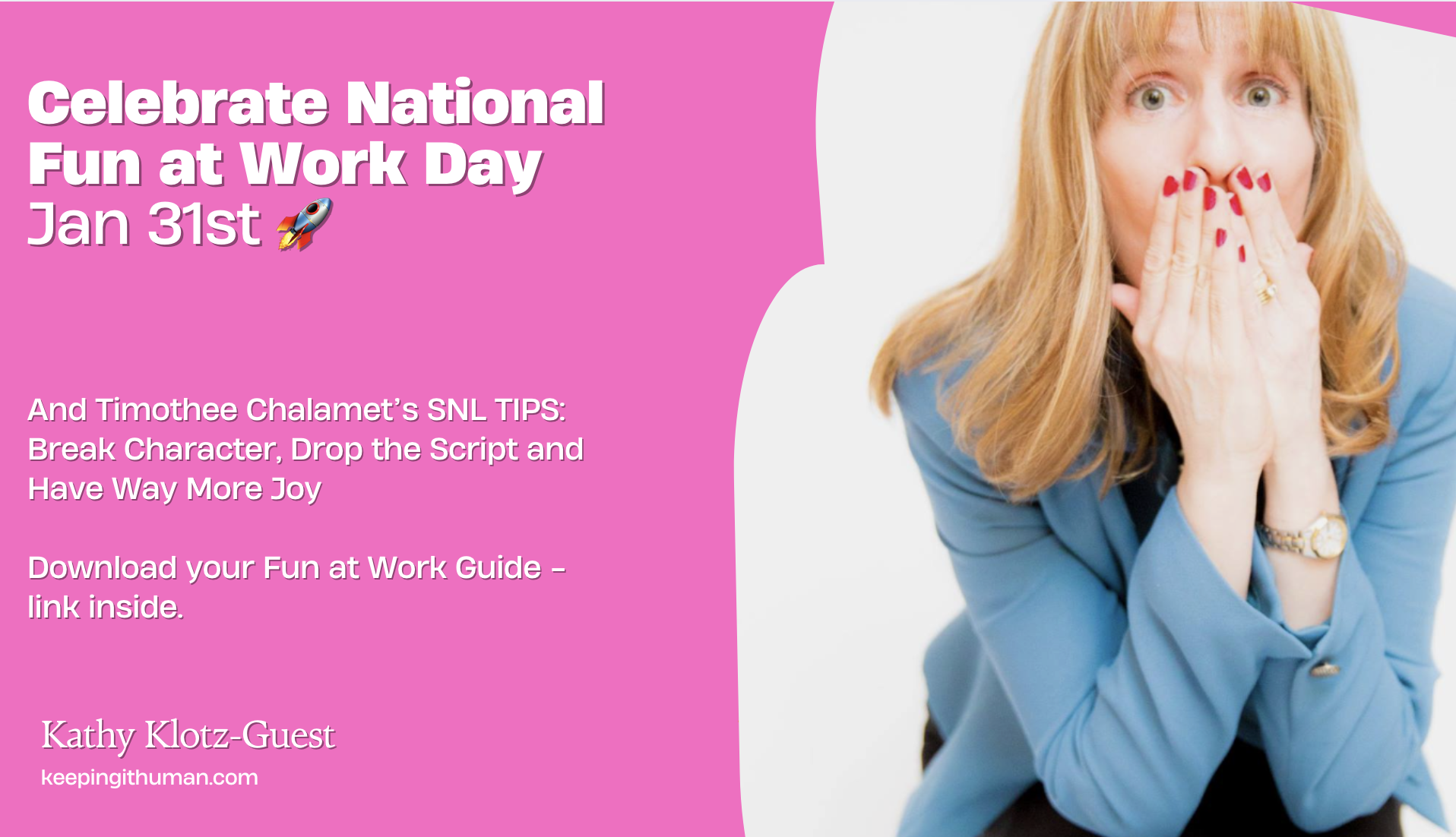KKG: Your success at IBM led to more of those videos and it became a serial effort.
TW: Yes, 6 ‘Art of the Sale’ videos. We would improvise, and with my writing partner, Scott, we ended up doing a few longer ones. The best bet is to do things shorter – 60 seconds or less.
KKG: What’s new at Cisco? I’ve seen some of the funny stuff you’ve worked on!
TW: We did the Father’s Day video <laughs> and Valentine’s Day video! I believe that is why Cisco asked me to join their team – they wanted to mix it up and play. They are willing to experiment and try new things. You have to experiment. So many companies are putting out so much content – but they forget about getting the story right. What we do is a mix of story, an offer and entertainment. It’s critical that good video have all three. Making people laugh won’t make them buy a million dollar mainframe; yet, there is still an enhancement to brand equity that happens when you make people laugh. They will listen!
KKG: Do you think the surprise and novel element of ‘Art of the Sale’ can happen again?
TW: I think so. We really had the element of surprise on our side –coming from IBM! The challenge is the controls from a branding standpoint. Big corporations can get too risk- averse, and that keeps people from doing the necessary experimenting to see what works.
KKG: Do you see compelling video today? Anyone you admire doing cool things?
TW: Ikea did a funny video. B2B has to kick it up a notch. What Ikea did was make it look like an improv troop. They did these funny short vignettes around an office or a kitchen set-up. It was phenomenal. Now, you have Madison Avenue agencies doing this stuff. It’s harder to reproduce the kind of guerrilla feel we had that way. When I did this for IBM, we didn’t have budget or big agencies controlling it. I almost couldn’t use a writing partner because he wasn’t an approved vendor! It was total guerrilla style and cost $1,000 bucks. This was the one before ‘Art of the Sale.’ We just did it on the fly. The line is blurred a bit today because you have so much production with the big ad agencies.
KKG: You lose the organic nature when ad agencies script it.
TW: That’s the challenge going forward. I think that’s why so much video and story innovation will happen in mid-sized companies because they don’t have the barriers and big agencies scripting things. There is so much cool stuff that could be done.
KKG: What else would you like to tell people?
TW: Be aware of the challenges you will face when doing things differently in a large company. When there is risk, you will face some fear. The obstacles will be there…but you have to be committed to try to get around it. Go shoot something quick first and show proof of concept. Be smart about managing and make people comfortable. In big companies, it takes committees to get approval. With comedy – you have to only involve several people. You can’t have judgment, as you know, from your improvisation. Let people create first and then show script. Once you get a committee involved in script – you kill the comedy; an attorney or marketer gets involved, and three edits later, you get something a lot less funny that isn’t worth doing.
KKG: Creativity by Committee is the Kiss of Death
TW: Well said. You have to have convictions and a strong point of view. The first comedy class I took – one with Eddie Brill, the opener for Letterman – taught me that. You need to be truthful and vulnerable. Only by being vulnerable are you really risking saying something of value. Once you get someone to laugh, though, you establish a connection. You have them. You cut trough clutter. You have earned attention. You can get someone to listen to you.
KKG: And that’s what it’s all about – getting people to listen! Thanks, Tim.
Follow Tim at @TimWasher
Follw Kathy at @KathyKlotzGuest


